The Encyclopedia of Cannabis Training Methods
A concise encyclopedia of the different cannabis training methods to increase bud production. From ancient Chinese culture to modern-day interior designers — feng shui is a philosophy that establishes order between ourselves and the environment.
From ancient Chinese culture to modern-day interior designers — feng shui is a philosophy that establishes order between ourselves and the environment.
As cannabis cultivators, it’s necessary to find balance in the garden.
A marijuana garden in harmony is void of pest outbreaks, small yields, and stunted crops. In other words, an organized garden avoids various pitfalls that plague beginners left and right.
One of the top techniques to unify your indoor or outdoor marijuana garden is to implement training methods.
Read along as we discuss the various training techniques available to weed growers. Discover each training technique and how they play a significant role in maximizing your cannabis yield.
Let’s begin!
A Brief History on Plant-Training Techniques
Plant-training techniques aren’t new or cannabis-specific.
Instead, training plants have long been used for a myriad of reasons, such as:
- Artistic (aesthetic) purposes
- Increased yield
- Structural purposes
From the ancient Greeks to the French Renaissance, cultures worldwide have been training plants to achieve specific goals.
Therefore, why shouldn’t we harness these time-tested techniques to increase our weed crops’ aesthetic, productivity, and flow?
Now that you understand that plant training isn’t a cannabis-based invention let’s move forward and discuss the purpose of each cannabis-training method in detail.
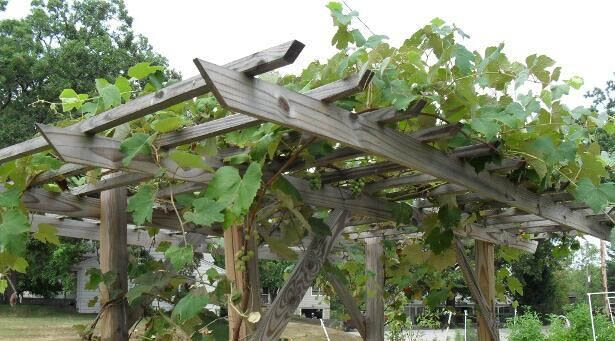
Plant-training techniques are used on grapes for example.
The Top Six Cannabis-Training Techniques
Unless you want a wild cannabis garden — you must use one of these techniques to tame your indoor or outdoor cannabis crop.
However, the training technique of your choice must be based on various factors, such as:
- Type of seed (i.e., autoflowering or feminized)
- Strain characteristics (i.e., tall, bushy, short flowering, vigorous grower)
- Location of the garden (indoors or outdoors)
Now that you understand the criteria to choose a given technique let’s outline each training method to provide a clear picture.
1. Low-Stress Training (LST)
Low-stress training, also known as LST, is a common technique loved by cannabis cultivators worldwide.
LST allows cannabis cultivators to open the cannabis plant into what’s known to agronomists as the open vase method. To gain a clear idea of the benefits of the LST technique, here’s a list:
- Increases light exposure to the interior bud sites
- Maximizes bud size throughout the entire plant
- Non-invasive and does not incur stress
- Reduces height
- Ideal in gardens that are limited to a small number of plants (due to local laws)
As you can see, there are several advantages to using the LST method. Furthermore, Low-stress training is ideal in indoor and outdoor cannabis gardens and only requires a few string pieces.
Whether you want to hide your cannabis plants from a nosy next-door neighbor or limit the pre-flower stretch indoors — the LST technique is beneficial.
Furthermore, the LST technique is the perfect tool to jump-start the Screen of Green method.
Do you want to learn how to train your cannabis plant using the LST method? If so, read our article — How to Train Your Cannabis Plant With The LST Method.
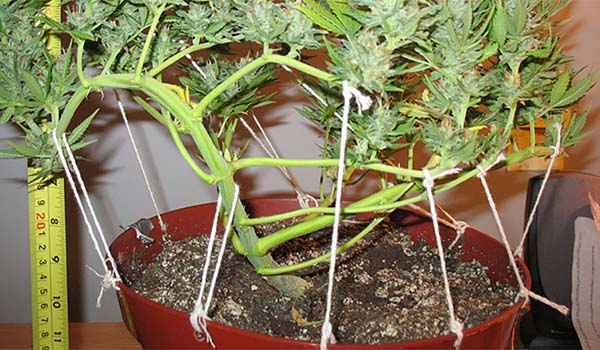
As you can see, low-stress training opens up the cannabis plant.
2. Lollipop
Next up is the lollipop method.
Lollipopping is another term for pruning, specifically removing the lower leaves and branches to increase:
- Accessibility to the plant
- Airflow
- Visibility
- Yield
Overall, lollipopping is ideal for medium to large weed plants indoors or outdoors because it’s unlikely that the plant’s underside receives much light. Therefore, removing the lowest growth level allows the cannabis plant to focus its energy on the upper-most section.
To envision this method, imagine a lollipop. The candy is located on the top and is supported by the stick below. When related to cannabis, the upper section of the plant focuses on bud production, and the lower limb supports the rest of the plant.
Overall, lollipopping weed plants allows you to inspect your crop with ease. Once you clear out all of the unnecessary bottom growth, you can check if:
- The irrigation lines are functioning correctly
- The medium requires water
- There are any pests or disease outbreaks
If you want to learn how to correctly lollipop your marijuana plants, head over to our in-depth guide — How to Lollipop Cannabis Plants.
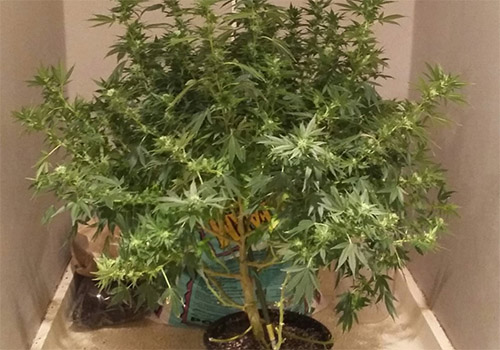
To achieve the lollipop method you need to get rid of the lower leaves and branches.
3. Super Cropping (HST)
Super Cropping, also known as high-stress training (HST), is a useful tool for indoor and outdoor marijuana gardens.
Cannabis plants are extremely hardy and adapt to stress quickly. In the case of super cropping, crushing a stem results in explosive growth. This example may seem counterintuitive. However, this method is well known throughout the cannabis community.
When left alone, cannabis plants naturally exhibit what is known as apical dominance. Apical dominance means that the uppermost section of the plant is the dominant shoot. Due to this phenomenon, the biggest bud is found at the top of the cannabis plant.
However, strategically crushing one or multiple stems breaks the apical dominance and releases hormones throughout the plant. Once released, the hormones cause the cannabis plants to slow apical growth and accelerate lateral growth.
In other words, the supper cropping technique produces:
- Multiple branches
- Bushy structure
- More bud sites
- Larger yield
- Less vertical growth
Furthermore, the HST technique is the perfect tool to jump-start the Screen of Green method.
Want to learn how to successfully supercrop your marijuana plants? Read our in-depth guide — How to Super Crop Cannabis Plants.
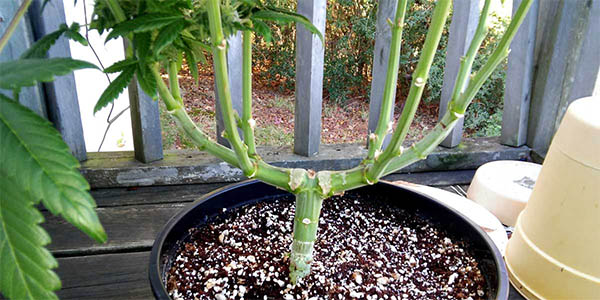
Super Cropping or High-Stress Training accelerates lateral growth.
4. Topping or FIM
Alright, now we’re venturing into more stressful territory.
Topping and FIMing marijuana plants is stressful because you literally cut off a portion of the cannabis plant. Cutting off a piece of your beloved marijuana plant is nerve-racking, no doubt, but it pays dividends when done correctly.
Topping and FIMing is by far some of the most popular training methods in cannabis cultivation. The benefits of topping and FIM are:
- Produces multiple bud sites
- Generates multiple lateral branches
- Slows vertical growth and increases lateral growth
- Increases yield in select cannabis strains
Furthermore, the topping and FIM technique are the perfect tools to jump-start the Screen of Green method.
Want to learn how to get the most out of your cannabis plants via the topping or FIM techniques? Read our in-depth guide — How to Top and FIM Marijuana Plants.
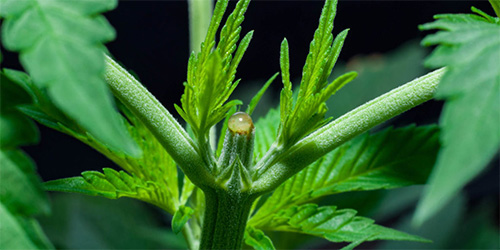
Topping and FIMing are some of the most effective plant-training techniques.
5. Screen of Green (ScrOG)
Whether you’re limited on space or legally allowed to grow a small number of plants, the Screen of Green technique will maximize your yield.
The ScrOG method is cherished far and wide for its ability to transform a single weed plant into a bud factory. All you need to accomplish a successful ScrOG campaign is some string (or wire), PVC (or wood), and time.
The benefits of the ScrOG technique are:
- Increases yield in select weed varieties
- Reduces vertical growth
- Levels the canopy for even bud growth
- Maximizes bud growth in relation to available space
- Increases light exposure
The beauty of the Screen of Green method lies in its simplicity. The ScrOG method can be achieved in several ways, such as:
- Supercropping
- Topping
- FIM
- LST
Ready to turn your indoor or outdoor cannabis plants into an artistic creation while pumping out ounces on top of ounces? Read our guide — How to ScrOG Marijuana Plants.
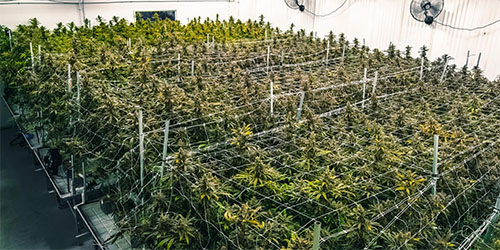
The Screen of Green method turns each cannabis plant into a bud factory.
6. Sea of Green (SOG)
Last but definitely not least is the Sea of Green method.
The Sea of Green technique is the OG training method used by generations of cannabis cultivators. By manipulating a cannabis plant’s size, the number of plants within a specific space can be maximized to the extreme.
In general, the SOG method exhibits:
- Many small plants in a given space
- An even canopy
- Rapid turnover
- Focus on apical dominance
Unlike all of the other previously discussed training methods, the SOG technique is the only approach that focuses on retaining apical dominance. Since the plants never reach their full size, the point is to get the most bud from each plant’s uppermost bud sites.
Ready to transform your garden into a miniature, but high-yielding, cannabis farm? Learn how with our guide — How to SOG Cannabis Plants.
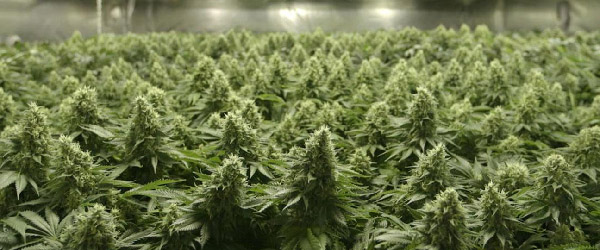
Unlike other plant-training techniques, the Sea of Green method focuses on apical dominance.
Which Marijuana Training Technique is Right For You?
As you can see, there are many exciting cannabis training techniques that you can harness to maximize your final yield.
Depending on your chosen cannabis strain and garden space, one of these training methods is right for you!
Don’t feel confident about going it alone? Don’t worry — we’ve created guides on implementing each of these techniques in a few easy steps. There’s no better time than now to push your crop to the limit, and each of these methods will only take you higher.
